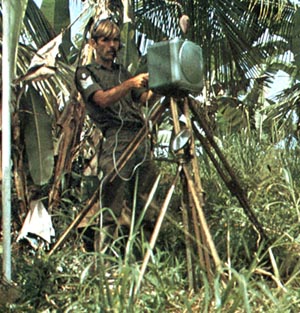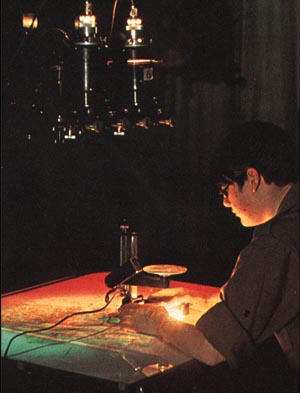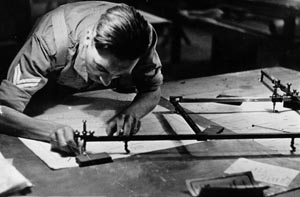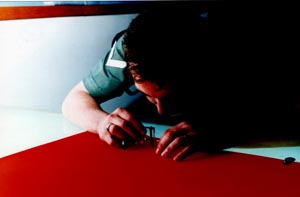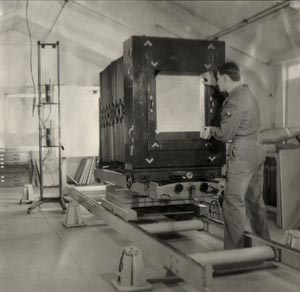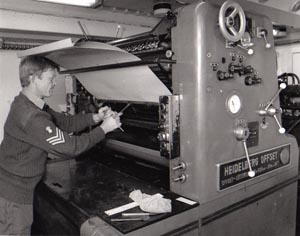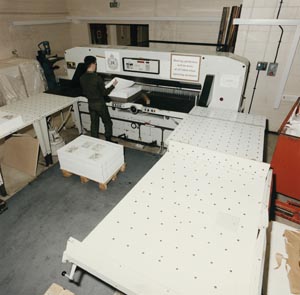|
Military Survey Soldier Trade Training 1960 - 1993
The soldier trades taught at the School of Military Survey at Hermitage at the start of this period reflected the distinct stages in the map production process of the time:
Of these eight trades all but the last were classed as A trades with the Storeman Survey rated as B. Throughout the Forties and Fifties the School was principally involved in providing basic training, class 3 level, to large numbers of conscripts. Upgrading courses at class 2 mainly occurred ‘on the job’ in units and only the relatively few regular soldiers returned to Hermitage for advanced training at class1. Two events in 1960 changed radically the way in which the School provided trade training for those in Military Survey; the ending of National Service and the introduction of technician trades. The new ‘all regular army’ needed to provide an attractive career for all who joined and so all courses were redesigned to provide comprehensive training at three levels; primary, intermediate and advanced. At the same time technician training at primary level for four new trades was introduced at the Army Apprentice College at Chepstow and a programme to assimilate suitable existing A tradesmen into the technician roster commenced at Hermitage. These technician trades, which had a higher theory element than the A trade, were:
And so throughout the 1960s Military Survey had 12 trades which, due to the relatively small numbers involved, caused considerable manning problems. There was also friction at the junior rank level as generally technicians and A tradesmen worked side by side at the same task but with the Chepstow entrant on a higher pay rate and, as a JNCO, not liable for the more unpleasant regimental duties. Due to advances to the use of computers in air survey methods and changes in map compilation and reproduction techniques the survey cartographic technician, draughtsman topographic and lithographic artist trades were reorganised in 1968 into two new technician trades.
Following the introduction of the military salary on the 1st of April 1970 there was a comprehensive review of the soldier trade structure resulting in a reorganisation in 1972 into an all technician system, other than for the Storeman Survey. Conversion courses were held during the next two years to re-classify the remaining A tradesmen as technicians so that Military Survey reduced to six employments.
There were two significant developments over the following twenty years. In 1973 the Survey Staff Specialist course was introduced to give selected warrant officers and SNCOs training in staff work and an overview of all aspects of map production in order that they were better trained for survey staff appointments and technician control posts. All soldier posts had to be justified by their having a war role and for a considerable number this was not at their primary employment but to work in the combat map supply system. As a result the Storeman Survey trade was replaced in 1981with a new map supply-based trade of Combat Surveyor which also became a starter trade for all technicians. A major policy change in 1990 removed uniformed personnel from routine map production work and committed them totally to providing direct support to the Field Army. This fundamental change was reflected not only in a completely new range of equipment but also in the training provided at the School of Military Survey where, in 1993 following a thorough review of requirements, the trade structure was reduced to three trades; Data, Terrain Analysis and Production Technicians. |
||||||||||||||
